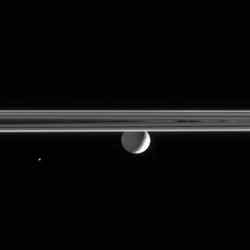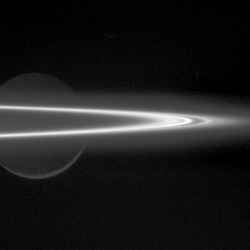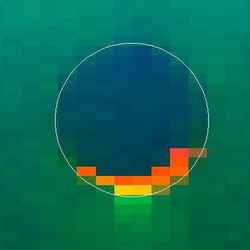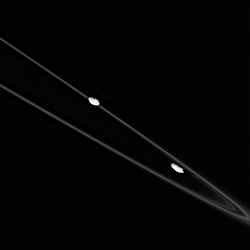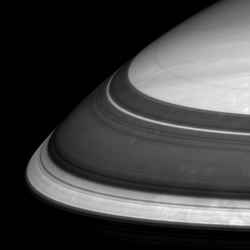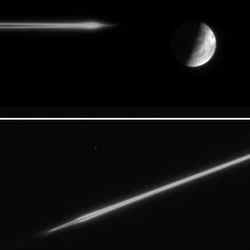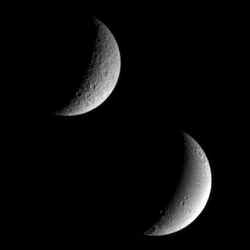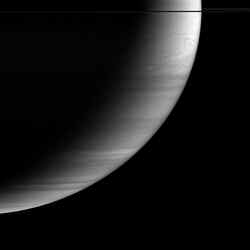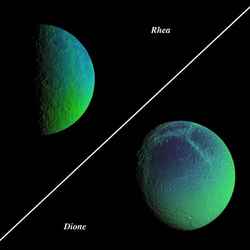
Titan’s orange globe surrounded with a soft purple haze. Image credit: NASA/JPL/SSI Click to enlarge
With its thick, distended atmosphere, Titan’s orange globe shines softly, encircled by a thin halo of purple light-scattering haze.
Images taken using blue, green and red spectral filters were used to create this enhanced-color view; the color images were combined with an ultraviolet view that makes the high-altitude, detached layer of haze visible. The ultraviolet part of the composite image was given a purplish hue to match the bluish-purple color of the upper atmospheric haze seen in visible light.
Small particles that populate high hazes in Titan’s atmosphere scatter short wavelengths more efficiently than longer visible or infrared wavelengths, so the best possible observations of the detached layer are made in ultraviolet light.
The images in this view were taken by the Cassini narrow-angle camera on May 5, 2005, at a distance of approximately 1.4 million kilometers (900,000 miles) from Titan and at a sun-Titan-spacecraft, or phase, angle of 137 degrees. Image scale is 8 kilometers (5 miles) per pixel.
The Cassini-Huygens mission is a cooperative project of NASA, the European Space Agency and the Italian Space Agency. The Jet Propulsion Laboratory, a division of the California Institute of Technology in Pasadena, manages the mission for NASA’s Science Mission Directorate, Washington, D.C. The Cassini orbiter and its two onboard cameras were designed, developed and assembled at JPL. The imaging operations center is based at the Space Science Institute in Boulder, Colo.
For more information about the Cassini-Huygens mission visit http://saturn.jpl.nasa.gov . The Cassini imaging team homepage is at http://ciclops.org .
Original Source: NASA/JPL/SSI News Release.

